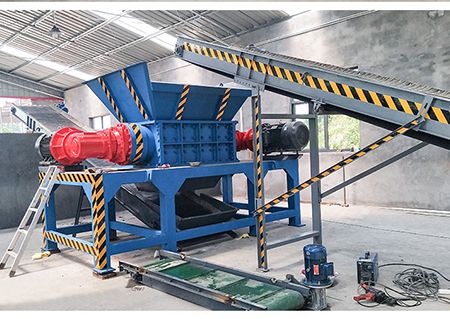
Tel/Whatsapp:+86 15649675999
Email:sale@kowloonmachine.com

Tel/Whatsapp:+86 15649675999
Email:sale@kowloonmachine.com
Article published:2024-04-05
How much does a garbage shredder cost?
The price of a garbage shredder is a sensitive topic, but understanding the differences in quotes between different companies and the reasons behind them can help us make better decisions. In the market, the prices of garbage shredders provided by different companies will be different, which is mainly due to differences in product performance, technical level, brand influence and after-sales service.
When choosing a garbage shredder, we must not only pay attention to the price, but also pay attention to the performance and reliability of the product. Some companies choose low-quality products in pursuit of low prices, and may end up facing frequent breakdowns and additional costs for repairs. Instead, choose products with good reputation and stable performance. Although the price is slightly higher, it is more cost-effective in the long run.
garbage shredder
In addition to the quality of the product itself, the supplier's after-sales service is also an important factor affecting the price of the garbage shredder. Perfect after-sales service can ensure the stable operation and timely maintenance of equipment, thereby reducing losses caused by failure and downtime.

In short, for the price of garbage shredders, we cannot just see the superficial numbers, but should have a deep understanding of the value behind them. Choosing the right garbage shredder is not only to reduce costs, but also to improve production efficiency and ensure the sustainable development of the enterprise. At the same time, full communication and understanding with suppliers, as well as establishing good cooperative relationships, are also the keys to ensuring smooth procurement and long-term stable operation of garbage shredders.
It’s more cost-effective to process industrial waste like this than to make it into fuel rods.
With the acceleration of carbon emission reduction work, energy-consuming enterprises have an increasingly strong demand for alternative fuels. The increase in domestic waste sorting will undoubtedly give the alternative fuel processing market a head-on blow, making the sources of alternative fuels more concentrated in industry. Rubbish.
Waste combustibles such as waste textiles, leather scraps, paper mill light residue, waste rubber, waste packaging, waste plastic products in industrial waste are the main raw materials for alternative fuels. Depending on the field of application, they can be processed using a variety of disposal options currently on the market. However, for operating companies, a solution with low initial investment and good product sales is an excellent solution. What we will talk about next is a processing solution that is more in line with the processing of other materials in the above industrial waste except waste rubber.
Although the demand for alternative fuels is large, the actual needs of energy-consuming enterprises are relatively similar. Judging from the current market demand, alternative fuels are mainly divided into two types, one is in bulk form and is directly put into the furnace for incineration, and the other is processed into fuel rods and then incinerated in the furnace. So, which form of alternative fuel is better? This starts from the demand side of the two.
The early market enthusiasm for fuel rods came from their high density, high unit calorific value, and easy transportation. Manufacturing companies and demand companies enjoyed each other. As their usage experience becomes richer, some demanding companies find that alternative fuels in the bulk state burn more fully and are more suitable for their own companies, so their demand for alternative fuels becomes clearer. For example, cement kilns, fluidized beds, etc. prefer alternative fuels in the bulk state, and grate furnaces do not reject them. It can be seen that the demand market for bulk materials is wider.
The differentiation in demand for alternative fuels and transportation cost considerations have led to different regions to determine their own processing techniques based on the needs of local companies. For example, there is no domestic waste power plant in the local area, only cement plants, and what is needed is alternative fuel in bulk form. There is no need for us to add equipment to produce fuel rods. Similarly, if local power plants and cement plants need fuel rods, then we need to purchase an RDF molding machine to produce fuel rods. As for regions that have demand for both fuel rods and bulk materials, Kowloon Environmental Protection has more reasonable solutions to choose from.
The processing process of alternative fuels generally includes primary crushing equipment (double-shaft shredder), secondary crushing equipment (single-shaft fine crusher), conveying equipment, iron removal equipment, and even screening equipment, air separation equipment, etc. Through the removal of impurities by auxiliary equipment (according to material needs) and the processing of two-stage crushing equipment, bulk alternative fuels are produced. If you want to add a fuel rod production line, you can directly use the RDF molding machine and other equipment in parallel with the bulk material conveying equipment. Through the intelligent control system, you can achieve both alternative fuel production and save energy consumption and labor costs for the overall production line operation.